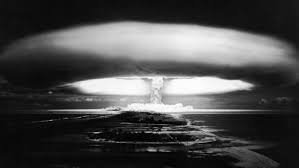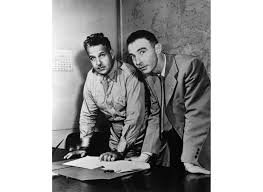The Setting: Los Alamos, NM During the Manhattan Project
A Glimpse into Los Alamos, New Mexico’s Secretive Past Many wonder, as we have, what was Los Alamos like during the Manhattan Project? Los Alamos, New Mexico, a picturesque town nestled amidst the rugged landscapes of the American Southwest, holds a remarkable and enigmatic history as the birthplace of the atomic age. The World War II era saw Los Alamos transform from an inconspicuous ranching community into the epicenter of scientific innovation, secrecy, and the pivotal Manhattan Project. In the early 1940s, against the backdrop of global conflict, the United States embarked on a scientific endeavor of unparalleled proportions. The Manhattan Project, a top-secret mission, aimed to develop the world’s first atomic bomb. Los Alamos emerged as the chosen site for this groundbreaking work due to its seclusion and distance from urban centers. Its remote location allowed scientists, led by luminaries like J. Robert Oppenheimer, to conduct research without prying eyes. The Transformation of a City The transformation of Los Alamos into a bustling scientific enclave was nothing short of remarkable. Scientists and engineers from across the globe flocked to the town. Each contributing their expertise to various aspects of the project. The entire community was shrouded in secrecy. Residents and workers alike were screened meticulously to ensure classified information remained safeguarded. Life in Los Alamos during this period was a blend of intensity, camaraderie, and isolation. The brilliant minds assembled there worked tirelessly, often around the clock, to solve the intricate puzzles of atomic physics. Collaborative efforts led to significant breakthroughs, enabling the project’s progression towards its ultimate goal. Life Amid the Backdrop of the Manhattan Project Despite the gravity of their mission, a sense of unity pervaded the atmosphere. Researchers, support staff, and their families formed a close-knit community. Social events, such as dances and gatherings, provided moments of respite from the intense scientific endeavor. This unique environment fostered relationships that extended beyond the laboratory, creating bonds that endured long after the war ended. However, the weight of secrecy also cast a shadow over daily life. The residents of Los Alamos were acutely aware of the gravity of their work and the potential consequences of their discoveries. The world-changing implications of the atomic bomb led to ethical dilemmas and moral contemplation. This dichotomy between scientific progress and ethical considerations is a hallmark of the Los Alamos experience during the Manhattan Project. Los Alamos: A Legacy of Advancement and Violence In August 1945, the fruits of labor culminated in the bombings of Hiroshima and Nagasaki, Japan, marking the end of World War II. The legacy of Los Alamos as a crucible of scientific advancement and ethical quandary endures to this day. The town’s historical significance is commemorated in museums and educational institutions that aim to shed light on the complex interplay between science, society, and responsibility. In conclusion, Los Alamos, New Mexico, during the Manhattan Project was a unique blend of innovation, secrecy, camaraderie, and moral introspection. The town’s transformation from a tranquil desert landscape into a crucible of scientific breakthroughs underscores the power of human ingenuity and collaboration. The legacy of Los Alamos serves as a reminder of the complexities inherent in the pursuit of knowledge and the responsibilities that accompany it.







